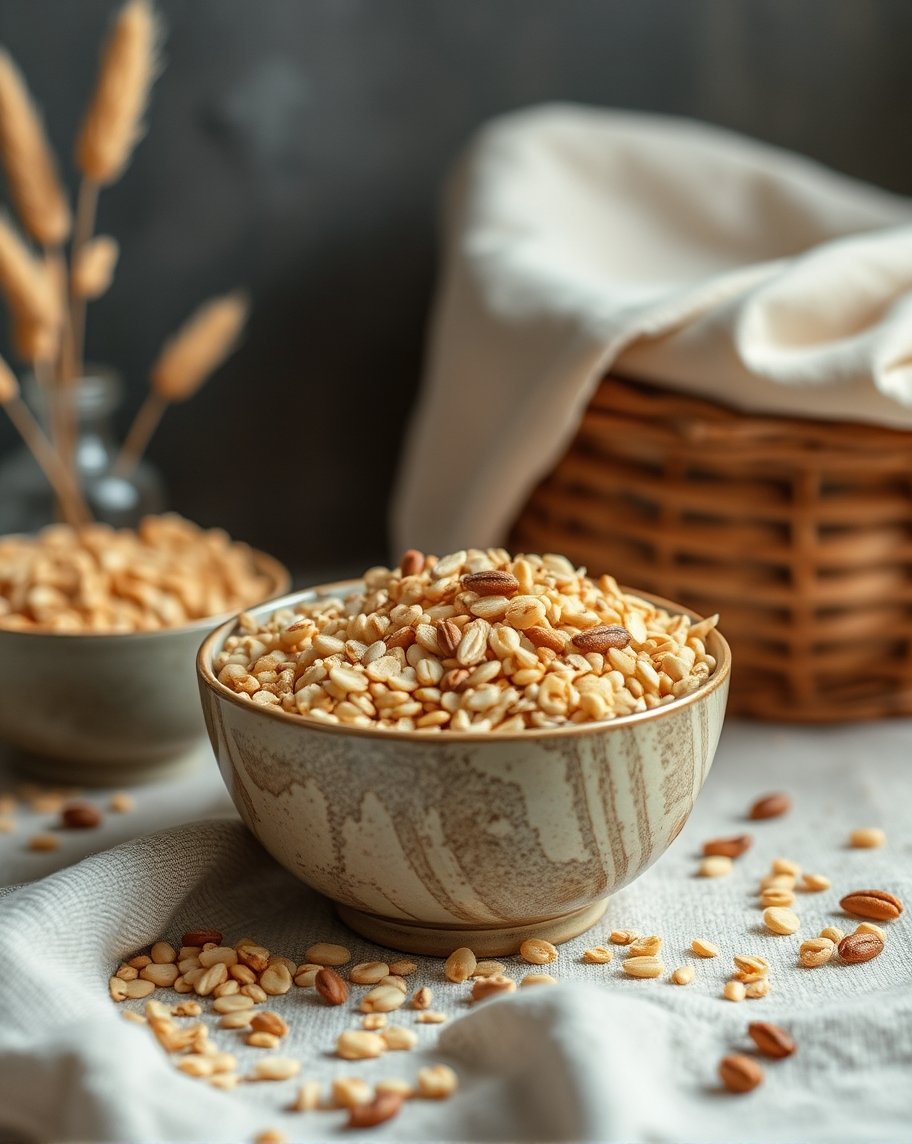The demand for healthier, more nutritious breakfast options has skyrocketed. One ingredient that has captured the attention of consumers and health enthusiasts is ancient grains. These nutrient-dense grains, often found in healthy cereal options, are revered for their rich history and incredible health benefits. Whether you’re looking for an energy-boosting meal to start your day or a gluten-free alternative, ancient grains offer a wealth of nutritional advantages.
We’ll explore the role of ancient grains in healthy cereals, their benefits, popular varieties, and how they contribute to a balanced diet. From spelt to quinoa, these grains have made a significant impact on modern health trends, and today we’ll delve into the reasons why they are becoming breakfast staples.
What Are Ancient Grains in Healthy Cereal nyt?
Ancient grains refer to varieties of grains that have remained largely unchanged over the last several hundred years. Unlike modern, highly processed grains, these grains retain much of their original structure and nutrient content. They are often unrefined, which means they are rich in fiber, protein, vitamins, and minerals. Popular ancient grains include quinoa, amaranth, spelt, farro, millet, and teff.
These grains have gained attention from health-conscious consumers due to their nutrient density and ability to support various dietary needs, such as gluten-free or vegan diets. They are known to contain more fiber and protein compared to traditional cereal grains like wheat, making them an ideal choice for those seeking a wholesome and filling breakfast.
Ancient Grains in Healthy Cereal
The integration of ancient grain in healthy cereal nyt options has been a growing trend. Companies now incorporate grains like quinoa, millet, and buckwheat into breakfast cereals to boost their nutritional value. These grains not only improve the cereal’s fiber and protein content but also introduce essential vitamins and minerals like magnesium, iron, and B vitamins, which are essential for energy production and overall health.
Ancient grain cereals are becoming more accessible in supermarkets, often promoted as organic, gluten-free, and non-GMO alternatives to conventional cereals. They appeal to consumers seeking whole, unprocessed foods with a clear nutritional profile.
Importance and Benefits of Ancient Grains
Nutritional Powerhouse
One of the major reasons ancient grains have become so popular in healthy cereal options is their rich nutritional profile. These grains are excellent sources of fiber, which supports digestive health and helps maintain stable blood sugar levels. Additionally, they contain essential fatty acids, which contribute to heart health, and they offer plant-based proteins that are crucial for muscle repair and maintenance.
Many ancient grains are also gluten-free, making them accessible to people with celiac disease or those following a gluten-free diet. Grains such as quinoa and amaranth, for example, provide essential amino acids that are usually lacking in other plant-based proteins, making them a valuable component of a balanced breakfast.
Health Benefits
- Weight Management: Due to their high fiber content, ancient grains can aid in weight management by promoting satiety and reducing hunger.
- Heart Health: Whole grains like spelt and farro are associated with reduced cholesterol levels and a lower risk of heart disease.
- Blood Sugar Control: Slow-digesting carbohydrates in ancient grains help regulate blood sugar, reducing spikes and dips that can lead to fatigue or cravings.
- Digestive Health: Fiber-rich grains like barley and teff support gut health by promoting the growth of healthy gut bacteria and improving regularity.
Incorporating ancient grains into a daily diet, especially through breakfast cereals, is an easy way to reap these benefits and improve overall well-being.
Applications and Use Cases
Ancient Grains in Everyday Meals
ancient grain in a healthy cereal nyt can be incorporated into more than just cereals. Their versatility makes them ideal for a variety of meals throughout the day. From using quinoa as a base for salads to adding millet to soups. These grains enhance the nutritional content of many dishes. In the context of breakfast cereals, they are often blended with nuts, seeds, and dried fruits to create a balanced, nutrient-dense meal.
In cereals, ancient grains can be enjoyed with milk or plant-based alternatives like almond or oat milk. For an extra nutritional boost, adding fresh berries, bananas, or a spoonful of Greek yogurt to the mix elevates the meal even further.
Popular Ancient Grains in Healthy Cereal
- Quinoa: Known for its high protein content and gluten-free status, quinoa is a popular grain found in many cereals.
- Amaranth: Rich in lysine, a crucial amino acid, amaranth supports muscle and tissue repair.
- Spelt: An ancient wheat variety, spelt is rich in fiber and offers a nutty flavor that enhances cereals.
- Millet: A gluten-free option, millet is high in magnesium, aiding in bone health and energy production.
- Teff: Common in Ethiopian cuisine, teff is a powerhouse of iron and calcium, promoting strong bones and improving blood health.
Challenges and Solutions
Potential Misconceptions
One misconception is that ancient grains are hard to find or too expensive for everyday use. However, as demand for healthier food options grows, ancient grain in a healthy cereal nyt have become widely available in many grocery stores and online retailers at competitive prices. They are also increasingly featured in a variety of products, from bread to snacks to cereals, making them accessible to a wide audience.
Another challenge is the perception that preparing ancient grains is time-consuming. While some grains do require longer cooking times, many cereals featuring ancient grains are pre-cooked or puffed, making them quick and convenient to prepare. Instant ancient grain cereals are also available, offering all the benefits without the time commitment.
Balancing Taste and Nutrition
Some consumers may hesitate to incorporate ancient grains into their diets due to unfamiliar tastes or textures. However, many cereals blend these grains with familiar flavors, such as honey, cinnamon, or dried fruits, making them more palatable for a wide range of preferences. Manufacturers often balance taste and nutrition to ensure that consumers enjoy both the flavor and health benefits of their cereal.
Conclusion
Ancient grains are more than just a passing trend—they are a return to nature’s original superfoods. Offering unparalleled nutrition and versatility. When incorporated into healthy cereals, these grains provide a powerhouse of fiber, protein. And essential nutrients that can help improve digestion, support heart health, and regulate blood sugar levels.
By choosing cereals made with ancient grains like quinoa, amaranth, or spelt. Consumers can start their day with a wholesome, energizing meal that promotes long-term health. As ancient grains become more integrated into modern diets. They represent not only a nutritional upgrade but also a bridge to more sustainable and wholesome eating habits.
For those looking to transform their breakfast routine. Ancient grains in cereal form offer the perfect balance of taste, convenience, and nutrition. Try incorporating these grains into your morning meals and experience the benefits firsthand.




